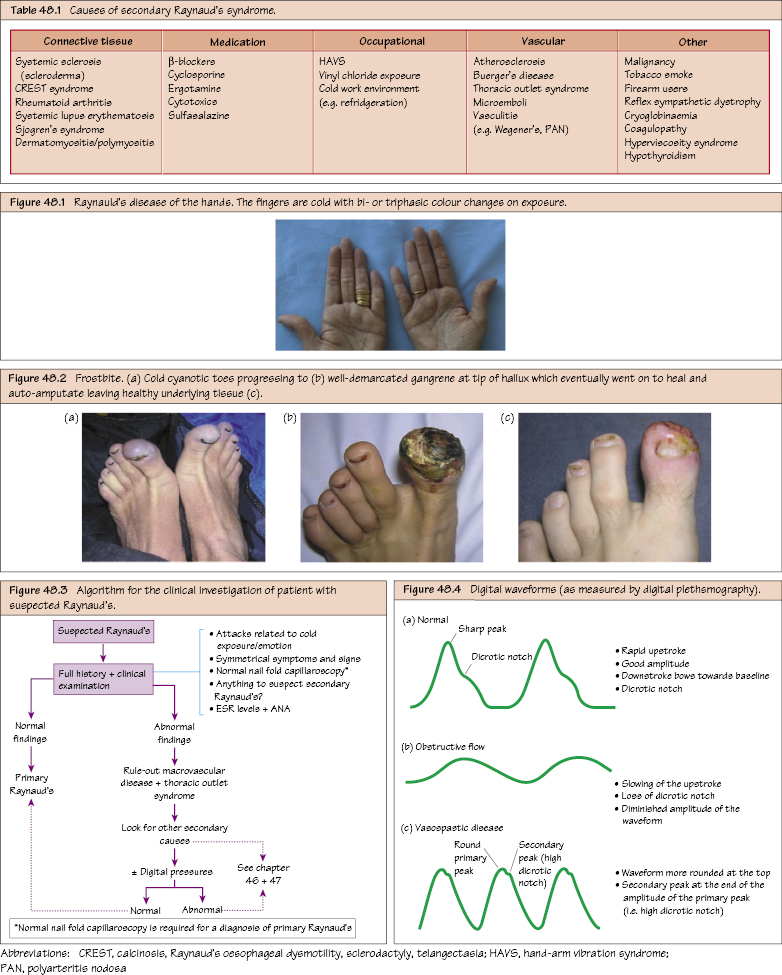Raynaud’s and Cold Injury A vasospastic disorder (primary or secondary) is any condition causing intense spasm in the arterial system resulting in ischaemia and pain. Raynaud’s is a cold-induced vasospastic disorder affecting the hands and feet. It may be classified as either primary (Raynaud’s disease) or secondary (Raynaud’s syndrome). Raynaud’s phenomenon is often used as a blanket term for any Raynaud’s-type peripheral vasospasm. This is an idiopathic vasospastic disorder, affecting about 10% of the population with a female preponderance (10:1). It occurs in isolation (i.e. without any other disease condition). This is a cold-induced, vasospastic disorder that occurs in association with other (usually systemic) conditions (e.g. connective tissue disorder) or with a triggering factor, other than cold (e.g. medication, occupational, etc). The ischaemia induced by the intense vasospasm leads to cold, painful extremities, especially affecting the digits. Typically during a ‘vasospastic attack’, the digits will pass through a variety of clinically diagnostic, well-demarcated colour changes (phases):

Vasospastic Disorders
Raynaud’s Syndrome and Disease
Primary Raynaud’s (Raynaud’s Disease)
Secondary Raynaud’s (Raynaud’s Syndrome)
Clinical Features
Stay updated, free articles. Join our Telegram channel

Full access? Get Clinical Tree


